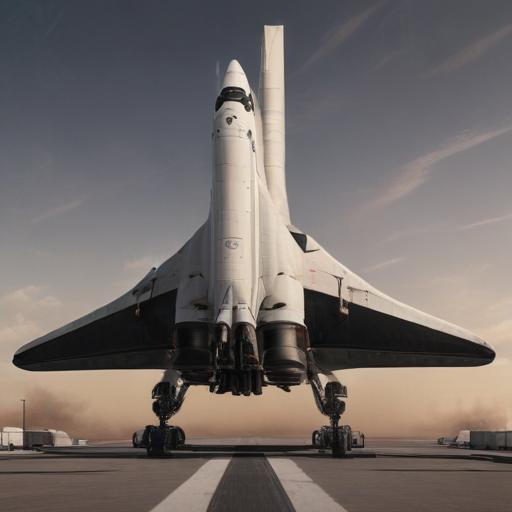United Launch Alliance on Tuesday rolled out a landmark milestone as its first operational Vulcan rocket lifted off, carrying two military satellites into space in the U.S. Space Force’s sanctioned debut for a launcher intended to replace the Atlas 5 and the long-retired Delta family.
The 198-foot-tall Vulcan wore four solid-fuel strap-on boosters for added takeoff power. Its BE-4 engines, which run on methane, ignited at 8:56 p.m. EDT, sending the rocket away from Space Force Pad 41 at Cape Canaveral. On an easterly path, the rocket lit up the night sky over the Atlantic with a bright plume and thousands of pounds of thrust, visible for miles.
About 90 seconds after liftoff, the four boosters separated, and three and a half minutes later the Vulcan’s first stage finished its burn and parted ways. The Centaur upper stage then took over, powered by two hydrogen-fueled RL10C engines. In keeping with standard policy for military missions, launch commentary was ended at that point and the remainder of the flight proceeded in secrecy.
Two satellites were believed to be on board: one fully classified, and an experimental payload to test upgraded atomic clocks and navigation technology that could yield more accurate, jam-resistant GPS-like data for military and commercial users. Both craft were destined for geosynchronous orbit about 22,300 miles up, where orbital periods are 24 hours and objects appear stationary in the sky.
The experimental Navigation Technology Satellite 3, or NTS-3, was designed and built by L3Harris Technologies and sits at the heart of a program that includes ground control and receivers linked by software to allow rapid reprogramming for upgrades. The mission aims to explore how GPS can evolve to maintain its “gold standard” for warfighters while enabling more flexible and robust signals.
The flight marked a major milestone for ULA. It was the third Vulcan flight, following two tests last year, and the first to be certified by the Space Force to carry expensive national security satellites and other sensitive payloads. ULA president and CEO Tory Bruno highlighted that the rocket’s design—high-performance BE-4 engines and a powerful Centaur upper stage—makes it well suited for heavy, hard-to-reach missions, including direct injection into geosynchronous orbit.
Bruno emphasized that Vulcan’s architecture is intended to deliver long-duration missions directly to high orbits, reducing the need for onboard propulsion by the satellites themselves. He noted that, compared with multi-core, three-core heavy launch configurations, Vulcan’s efficiency and capability offer a compelling path for launching heavy, government-only payloads into distant orbits.
The Vulcan is part of ULA’s broader transition away from the Russian-built RD-180 engines used on Atlas 5 and toward an all-Vulcan fleet, as the company phases out the Delta line and resurrects a domestically powered launch architecture. With 13 Atlas 5s remaining in inventory, ULA plans to reserve them for civilian missions while moving toward a fully Vulcan-driven future.
SpaceX currently dominates the global launch market with its Falcon 9 and Falcon Heavy rockets. Nonetheless, Vulcan’s success strengthens the United States’ domestic capability to place sensitive defense satellites into precise orbits without relying on external propulsion. The mission showcased Vulcan’s capability to perform direct injections to high orbits, a capability Bruno says sets it apart for heavy government payloads.
ULA also outlined its near-term cadence, aiming for nine flights in 2025 and a goal of two Vulcan launches per month by year’s end, with 20 to 25 launches projected for 2026 as operations scale.
What this means going forward is a more autonomous, domestically powered launch path for national-security satellites, paired with ongoing work on navigation technology that could yield more resilient GPS-like signals for both military applications and civilian users. The NTS-3 program, together with the Vulcan’s performance, points to a future where high-demand, high-orbit missions can be performed with greater speed and reliability by a primarily American launch system.
Key takeaways
– Vulcan’s first operational flight carries two military payloads, one unclassified and one experimental focusing on next-generation navigation technology.
– The mission demonstrated direct injection capability to geosynchronous orbit, expanding ULA’s reach for hard-to-reach targets.
– The success underscores the shift from legacy Atlas 5 and Delta rockets to a domestically powered Vulcan fleet.
– ULA plans a steady launch cadence in the coming years to build out their heavy-lift capacity and support Space Force and other customers.
– The NTS-3 program aims to modernize GPS infrastructure with advanced phased-array antenna technology and rapid reconfiguration capabilities.
Why this matters
– A domestically powered, Space Force-certified launcher strengthens national security space infrastructure and independence from foreign propulsion.
– Vulcan’s design and the NTS-3 testbed collectively advance resilient, jammable-resistant navigation and timing systems essential for both defense and critical civilian applications.
– The transition to Vulcan supports the broader goal of sustaining a competitive, high-volume launch ecosystem in the United States, counterbalancing other market leaders.
Summary
The first operational Vulcan flight marks a pivotal step in modernizing America’s launch capabilities for national security missions, introducing direct-to-geosynchronous capability with a domestically produced propulsion stack, and advancing next-generation navigation technology through the NTS-3 program. As ULA positions Vulcan as the backbone of its future, the company plans a robust flight schedule to meet growing demand and maintain strategic space superiority.
